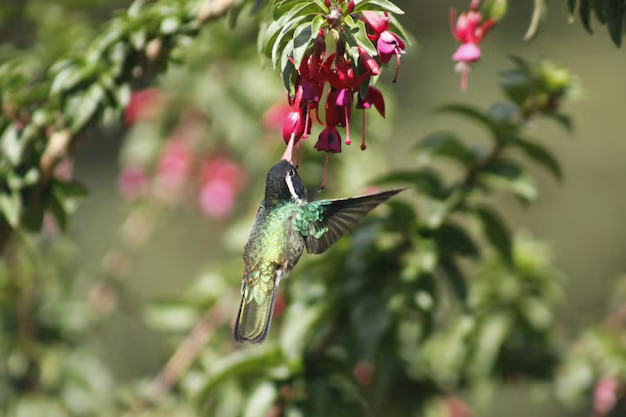How Long Can You Store Hummingbird Food in the Refrigerator? A Comprehensive Guide
Hummingbirds are among the most fascinating birds, flitting about with immense speed and grace. For many bird watchers and enthusiasts, providing a steady supply of nectar to attract these spectacular creatures can become a beloved routine. But one common question arises: how long does hummingbird food last in the refrigerator? To maintain healthy and vibrant visitors, understanding the storage and shelf life of hummingbird food is crucial. Let’s delve into the intricate details of this topic.
🏠 Understanding Hummingbird Food Basics
What is Hummingbird Food?
At its core, hummingbird food primarily consists of a simple solution: four parts water to one part white granulated sugar. This mixture replicates the natural nectar they find in flowers, supplying them with the energy they need for their high metabolism. While this is a basic recipe, it forms the foundation of feeding hummingbirds effectively.
Importance of Proper Storage
Why care about the shelf life of such a simple mixture? It's all about the health and safety of the birds. Improper or prolonged storage can lead to:
- Fermentation
- Mold growth
- Deterioration of the sugar solution
All these factors can make the food harmful to hummingbirds, leading to potential health risks.
📦 How Long Does Hummingbird Food Last?
Refrigerator Shelf Life
Refrigerating hummingbird food is a common practice to extend its shelf life. When stored properly:
- Homemade nectar can typically last about 1 to 2 weeks in the refrigerator.
- It's essential to store it in a clean, airtight container to prevent contamination and absorption of odors.
Factors Affecting Shelf Life
Several factors can influence how long your hummingbird food remains fresh:
- Storage Conditions: The temperature and cleanliness of the refrigerator play a role.
- Container Quality: Glass jars or high-quality plastic containers work best. Avoid old plastic containers that could leach flavors.
- Sugar Concentration: Maintaining the right ratio prevents rapid fermentation.
🔄 Signs of Spoilage
Knowing when your hummingbird food has spoiled is critical. Here are some signs to watch for:
- Cloudiness or Sediment: Indicates sugar is breaking down or contamination is occurring.
- Off Smell: A sour or yeasty smell signifies fermentation or mold.
- Visible Mold: Any sign of mold is a clear indicator the nectar is unsafe.
When in doubt, it's always safer to discard and replace the nectar.
🔧 Safe Storage Practices for Hummingbird Food
Preparation Tips
To extend the life of your hummingbird nectar:
- Boil the Water: Before adding sugar, boiling helps kill any potential pathogens.
- Mix Thoroughly: Ensure the sugar dissolves completely.
Proper Storage Techniques
- Cooling: Let the nectar cool completely before storing.
- Sealing: Use airtight containers to store nectar in the fridge.
- Labeling: Mark the container with a preparation date to keep track of its freshness.
Best Cleaning Practices
Before reusing any feeders or storage containers:
- Clean with Hot Water: Use a solution of water and vinegar if needed, but avoid soaps or detergents, which can leave residues.
- Inspect for Residues: Ensure no sugar residues are left, as they can harbor bacteria.
🌼 Importance of Regular Replacement
Even when stored correctly, replace the nectar every few days in your feeder to ensure hummingbirds have access to fresh food. This practice prevents:
- Spoilage and associated health risks.
- Formation of harmful substances like mold or bacteria.
📅 Establishing a Routine
Setting a Schedule
Creating a regular schedule helps maintain freshness:
- Weekly Inspection: Check stored nectar for any signs of spoilage.
- Replacement Days: Choose specific days to change the nectar, e.g., twice a week, to ensure freshness.
Monitoring the Weather
Weather impacts nectar preservation:
- Hot Weather: Increase cleaning frequency as nectar spoils faster.
- Cooler Weather: While storage might last, feeders still need regular cleaning.
🤔 Frequently Asked Questions
Is boiling water necessary?
Boiling water is recommended as it kills potential pathogens and helps sugar dissolve, ensuring a pure nectar.
What if I notice sediment in the nectar?
Sediment can indicate sugar re-crystallization or contamination. It's safer to create a new batch immediately.
Can I store nectar in the freezer?
Freezing is generally not necessary, nor recommended, as it can alter the texture and consistency when thawed, potentially affecting its appeal or safety.
📝 Quick Tips for Hummingbird Food Enthusiasts
Here’s a concise guide to keeping hummingbird nectar fresh and appealing:
- ✨ Boil Water: Always boil to ensure pathogens are eradicated.
- 🔒 Use Airtight Containers: Protects against contamination.
- 💧 Regular Feeder Cleaning: Protects birds from spoiled nectar.
- 🗓️ Schedule Reminders: Replace nectar regularly, especially in warm climates.
🪄 The Importance of Attention to Detail
Ultimately, providing fresh and safe hummingbird food is a combination of understanding preparation, recognizing spoilage signs, and adhering to diligent storage practices. With thoughtful care, you’ll enjoy the mesmerizing presence of hummingbirds, knowing they’re receiving the nourishment they need. By investing time in proper handling and regular replacement of nectar, not only will you enhance the health and safety of these incredible beings, but you'll also enrich your experience as a responsible and attentive bird enthusiast.
